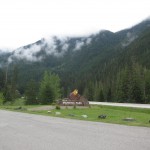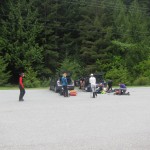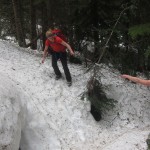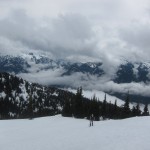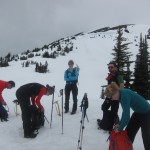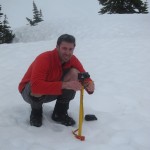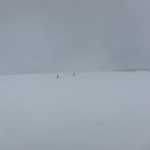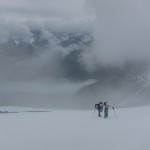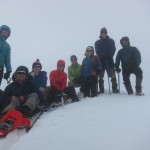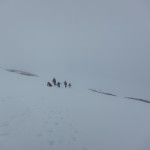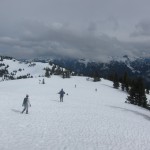Beyond the Mountain, by Steve House: Most people in the mountaineering community know of Steve House, the man considered by Reinhold Messner to be the greatest alpine climber of the current millennium, and this book from a few years ago is his telling of his formative years, the physical and psychological burden of his climbs, and the impossible to rival bonds that can only be formed by tying yourself to another so that you both live or both die. I found this book to be more possible to relate to than than Twight’s “Kiss or Kill”, and some of the stories and photos are just unbelievable. Highly recommended for anyone wanting a peek into the mind of one of our age’s greatest climbers.
Mastery, by Robert Greene: I’m a big fan of Greene’s “The 48 Laws of Power”, and although I wasn’t terribly impressed by his “The 33 Strategies of War”, when my brother recommended Greene’s latest book to me, I was eager to give it a read. Unlike his other books, which consist of loosely tied together but largely independent collections of “laws”, along with associated descriptions, analyses, and reversals, this book attempts to build up a cohesive view of what it means to achieve “mastery”. As always, Greene ties together a vast array of historical anecdotes to support his points and the book is always lively and entertaining, but its tone of seriousness causes it to lose some of the enjoyment of the “is he possibly serious??” reaction that came from reading the pages of his previous books. It’s a good read, but doesn’t reach the level of greatness that was the “48 Laws of Power”
Hacker’s Delight, by Henry S. Warren Jr: This is an interesting collection of programming “hacks” in the old-school sense of the word: clever and unexpected ways of using encodings and CPU operations to accomplish things efficiently, such as finding the index of the next 1 in a series of bits or counting the number of set bits in a word. Most programmers these days probably could care less about these things, but for the few of us plugging away on a backend calculation engine there are some worthwhile ideas in here.
Don Quixote, by Miguel Cervantes: What a tome! Considered by many to be the first novel, the two parts of Don Quixote took a good long while to plow through, both due to the sheer volume of text and to the fact that many sections of the book (especially in the first part) simply drag on and on. It is telling that almost every famous event from the book takes place in the first 30 pages. Nonetheless, for readers with enough fortitude to stick it out and make it to part 2 (originally published a decade later), you are in for a treat as Cervantes’ skill grew tremendously and he was able to craft a narrative and not just a seemingly random series of vignettes. I read the translation by John Rutherford, and was very impressed by it, especially with regards to the translation of poems and colloquialisms. It’s definitely not for everyone, but certainly falls into the category of book that all lovers of literature should read at some point in their lives.
Days of Fire, by Peter Baker: With this book, Baker has put together a comprehensive, thorough, yet very readable account of the George W. Bush presidency with a special focus on his relationship with Dick Cheney. Very even handed, reading this book one can’t help but see that Bush was faced with few easy choices, especially when surrounded by such ideological and manipulative advisors with their own personal agendas like Don Rumsfeld, Paul Wolfowitz, and sometimes Cheney himself. Loyal and trusting to a fault, Baker shows how Bush was blind to the hidden agendas of these individuals and only late in his presidency was he experienced and strong enough to stand up to personally take charge of the running the country in the compassionate and bipartisan manner that he had first campaigned on years earlier. Definitely worth reading.
The Stuff of Thought, by Steven Pinker: I’m of two minds about this book, just as it seems Pinker was when writing it. The first third of the book is quite technical in how it breaks down the structure of phrases to discover how semantics are contained in words, while the rest of the book is an interesting, but lay-written look at the evolution of the meaning behind taboo words and phrases, jokes, figures of speech and so on. If you read it, you’ll learn something, but most of the content is stuff that you’ve probably heard of elsewhere if you’re well read.
An Astronaut’s Guide to Life on Earth, by Chris Hadfield: When I was first given this book, I thought it would be a little piece of fluff meant to capitalize on Hadfield’s fame after returning to earth from his stint as commander of the international space station (ISS) (the first Canadian to do so). However, I found it to be surprisingly enjoyable. Hadfield is incredibly humble about his success and his tales of endless preparation, practice, hard-work, and as he says “sweating the small stuff” really resonated with me as that is exactly as I like to approach my career in software development. It’s a small book, and a quick read, but very enjoyable.
Iron Curtain: The Crushing of Eastern Europe, by Anne Applebaum: Applebaum’s previous book, “Gulag” was a masterpiece of historical writing and won a well-deserved Pulitzer Prize. Unsurprisingly, I’ve been keen to read her follow-up book on the establishment of communism in Eastern Europe (in particular, Germany, Hungary, and Poland) after the second world war. It’s a very well researched and interesting book, and her thesis about how communism was able to succeed because it always made apathy a better choice on a day-to-day basis than confrontation (an ordinary person’s life was better if they pretended to support communism than to openly defy it) so that even though few people supported communism, everyone pretended and just went along with it even as their freedoms were crushed. Nonetheless, the organization into strict topical chapters “Police”, “Politics”, “Radio”, etc means that the flow isn’t as good as it could be. Not as good as “Gulag”, but well above average.
What is Life?, by Erwin Schrodinger: A little collection of lectures that caught my eye in Chapters a few months ago including the titular essay “What is Life?”, this contains the great physicist Schrodinger’s efforts to shape and predict what will be found to be the underlying structures of life. This predates the discovery of DNA by a few years, but it is fascinating to see how prescient his predictions about what chromosomes are made of (for example) would prove to be. Highly recommended for people interested in the history of modern science.
Who Owns the Future, by Jaron Lanier: In this book, Lanier presents his thesis about how “big data” and “siren servers” don’t properly value people’s work, and presents his own “modest proposal” on how to go about fixing it. The problem is very clearly stated and well argued. For example, if people translate texts and post them online, a company like Google can suck in the translations to improve their translation engine without any compensation to the person who originally did the translation, even though eventually the original translator could be put out of work by Google’s translation engine. His proposed solution is to use two-way links to trace what data was used by models so that the people who created the data underlying the model can be compensated for the capabilities of the model when it’s used. I realize it’s meant as a polemic and meant to get people thinking, but to start a serious conversation, I would’ve preferred more details on how he thinks this could ever possibly be done, as the cost and complexity of maintaining the lineage of all data would seem to be astronomical in comparison to the one-way hyperlinking strategy used on the web today.
Steve Jobs, by Walter Isaacson: Another Christmas gift that I’d put off reading for a while because I wasn’t sure about how interesting it would be, once I started reading Isaacson’s biography of Steve Jobs, I couldn’t put it down and finished the whole thing in one day. Extremely well written, insightful, and frequently unflattering, and published shortly after Jobs’ death, it is easy to see why this book caused such a splash. If you work in the tech industry, read this book.
